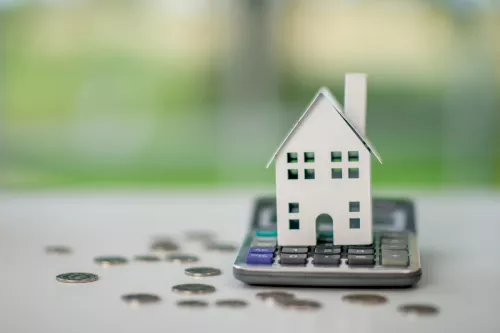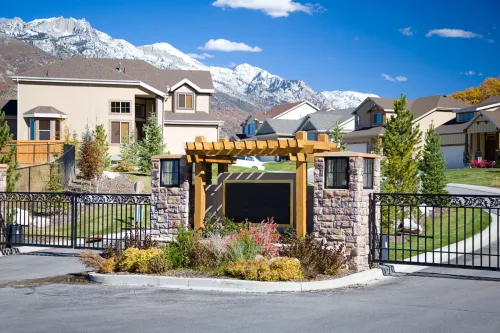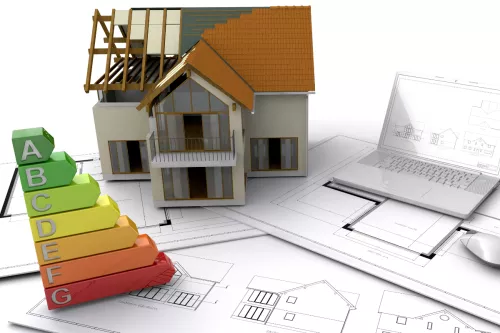When it comes to interior and architectural styles, few styles are as distinctive and versatile as industrial style. Initially associated with converting old factories into modern living spaces, this rugged and utilitarian aesthetic, also known as the loft style, originated in New York in the 1950s. Despite the passage of time, it remains one of the most popular choices in interior design.
Early industrial-style interiors were abandoned factories or warehouses featuring large windows and high ceilings, converted into homes. These spaces primarily catered to artists or immigrants who couldn't afford city apartment rents.
Today, the industrial style is no longer limited to loft-type homes and can be adapted for any type of residence. In this article, we'll delve into all things industrial style, covering variations, examples, history, and frequently asked questions. Below, we'll outline the key features to consider for transforming your home into a stunning industrial-style space.
What Is Considered Industrial Style?

Industrial style is a distinctive architectural and interior design trend that emphasizes raw, unfinished materials and a utilitarian aesthetic. Inspired by the conversion of urban factories and warehouses into modern living spaces, it combines rugged charm with practical functionality.
Key features of the industrial style include:
- Materials: The hallmark of industrial design is the use of raw and unrefined materials. Exposed brick walls, steel beams, concrete floors, and reclaimed wood all contribute to the gritty, unfinished appearance that defines this aesthetic. Other materials like iron, glass, and copper are often used to add visual interest and contrast.
- Structural Elements: Rather than concealing structural components, industrial style celebrates them. Visible ductwork, piping, and support beams are left exposed, adding a mechanical and utilitarian flair to interiors. This transparency creates a sense of honesty and authenticity.
- Color Palette: The color scheme typically revolves around neutral tones such as gray, black, white, and brown, with occasional accents of metallic finishes like brass, copper, and steel. These neutral hues provide a minimalist backdrop that highlights the natural beauty of the materials.
- Furniture and Fixtures: Furniture is often minimalistic, with clean lines and a focus on functionality. Pieces made from reclaimed wood, steel, and leather are common. Industrial-style lighting fixtures, such as pendant lamps with exposed bulbs and steel-framed sconces, further reinforce the utilitarian aesthetic.
- Open Layouts: Open, spacious layouts are integral to the industrial style. Originally a necessity due to the expansive nature of factories and warehouses, this feature has become a design staple, providing flexibility and enhancing the raw, airy ambiance.
- Factory-Inspired Details: Industrial design often incorporates details that reference its origins, such as factory gears, vintage machinery, metal lockers, and old signage. These accents infuse spaces with a nostalgic touch while adding to the rugged aesthetic.
Core Elements of Industrial Style
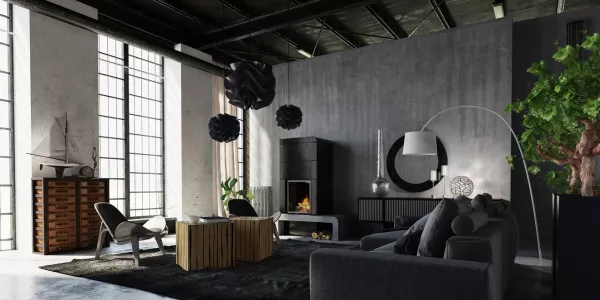
The industrial style is grounded in raw, unfinished materials that exude a rugged, utilitarian aesthetic. Key materials include concrete, steel, exposed brick, reclaimed wood, and glass.
- Concrete: Used for floors, walls, and countertops, concrete adds a sleek yet unfinished look.
- Steel: Found in beams, fixtures, and furniture, steel contributes a metallic and mechanical touch.
- Exposed Brick: Adds warmth and texture while creating a sense of history and character.
- Reclaimed Wood: Salvaged from old buildings, wood brings a natural contrast to the coldness of metal and concrete.
- Glass: Large windows and glass partitions maximize light and create a spacious feel.
Colors: The industrial color palette revolves around neutral tones such as black, white, gray, and brown, often contrasted with metallic finishes.
- Black and Grey: Create a stark, modern contrast that enhances the mechanical feel.
- White and Brown: Add warmth and soften the overall rugged look.
- Metallic Accents: Brass, copper, and steel finishes give an industrial space a vintage or contemporary flair.
Furniture: Industrial-style furniture is typically minimalistic with clean lines, emphasizing function over form.
- Incorporates reclaimed or vintage pieces that reflect the era of industrialization.
- Common materials include metal, leather, and reclaimed wood.
- Examples include steel-framed chairs, leather sofas, and wooden tables with metal bases.
Lighting: Lighting plays a crucial role in enhancing the industrial aesthetic.
- Pendant Lamps: Often feature metallic shades and exposed bulbs, hanging from long cords or chains.
- Edison Bulbs: Add a vintage, warm glow, characteristic of early 20th-century lighting.
- Steel-Framed Fixtures: Highlight the mechanical, utilitarian aspect with steel cages or wire frames.
Accents: Factory-inspired details like gears, pipes, and rivets add an authentic touch.
- Vintage factory signage, metal lockers, and machinery parts serve as decorative pieces.
- Other accents include exposed piping, metal fittings, and mechanical components repurposed as art.
What Are Examples of Industrial Design?
Industrial design encompasses a rugged, utilitarian aesthetic that celebrates raw materials, exposed structures, and factory-inspired decor. From loft apartments and repurposed accessories to converted warehouses, the industrial style has a distinctive versatility that can be adapted to various spaces and purposes. Let's explore some prominent examples:
Loft Apartments:

Loft apartments epitomize the industrial style, drawing inspiration from converted warehouses and factories. They feature open-concept layouts characterized by expansive spaces with high ceilings, large steel-framed windows, and exposed brick walls. The flooring often consists of polished concrete or reclaimed wood, adding to the raw and unfinished aesthetic. Metal fixtures, ductwork, and support beams remain visible, reinforcing the industrial vibe. Minimalistic furniture with clean lines and a combination of vintage and reclaimed pieces enhance the look. Loft apartments offer a unique blend of spaciousness, natural light, and urban sophistication that embodies the essence of industrial design.
Reclaimed Furniture:

Reclaimed furniture is another cornerstone of industrial design, blending functionality with historical charm. Tables, shelves, and cabinets are often crafted from salvaged wood, old factory equipment, or vintage machinery parts, adding character and authenticity to the space. For instance, dining tables with metal bases, shelving units made from repurposed factory carts, and desks constructed from old doors exemplify this trend. Reclaimed wood provides warmth and a sense of history, while metal accents add to the rugged, utilitarian feel. Each piece tells a story, contributing a unique narrative to the industrial aesthetic.
Repurposed Accessories:
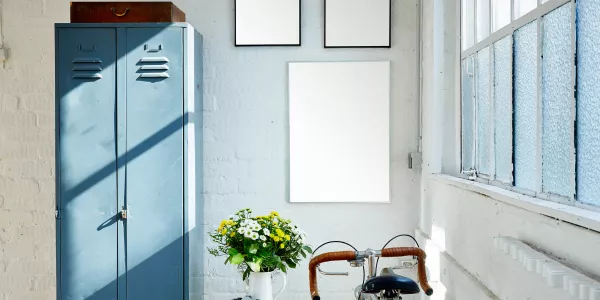
Industrial design thrives on creative repurposing, turning factory remnants into one-of-a-kind decorative items. Lighting fixtures made from piping, gears, and wire cages add a mechanical touch and pay homage to the era of industrialization. Vintage signage, like old factory signs, metal nameplates, and license plates, infuses spaces with nostalgic accents. Additionally, vintage metal lockers, once used in factories and schools, are repurposed as storage units or decorative features. These accessories highlight the beauty of utility and craftsmanship, providing a perfect finishing touch to industrial interiors.
Converted Warehouses:
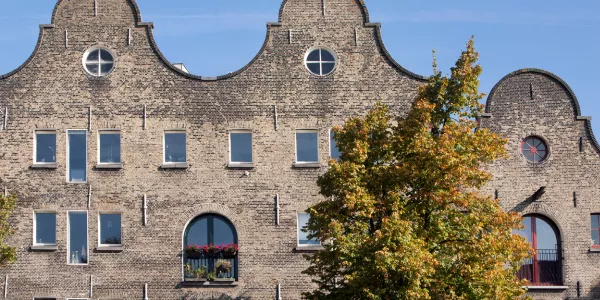
Converted warehouses showcase the industrial style on a grand scale, offering expansive spaces transformed into modern offices, restaurants, or retail stores. The original architectural features, such as steel beams, concrete floors, and factory windows, are preserved and celebrated, providing a unique backdrop for contemporary design. Minimalistic furnishings, metal fixtures, and vintage accents complement the industrial setting. Office spaces often feature open workstations, exposed ductwork, and glass partitions, while restaurants may include communal tables, exposed piping, and steel-framed lighting fixtures. Converted warehouses embody the industrial spirit by blending rugged architecture with modern functionality.
What Is Industrial Art Style?
The industrial art style is closely related to industrial design but places a stronger emphasis on artistic expression through functional objects. It merges form and function, highlighting the beauty of utilitarian structures and machinery. This style often includes sculptures made from reclaimed industrial materials, vintage machinery repurposed as art, and unique lighting fixtures that serve both functional and decorative purposes.
Industrial art blends industrial technology with artistic creativity, resulting in products that are both functional and visually appealing. It involves designing and producing industrial products while prioritizing artistic expression. To foster the growth of national industries, museums dedicated to industrial art have been established in various countries, including Russia. The field encompasses a wide range of topics such as product design, architecture, materials, production, and distribution.
In China, traditional industrial art plays a significant role in the nation's cultural heritage, highlighting ancient customs, historical features, and the aesthetics and wisdom of its people. Although the protection and development of traditional industrial art face challenges in today's society, ongoing efforts aim to preserve and promote this valuable cultural heritage.
What Is the Industrial Aesthetic?
The industrial aesthetic is a distinctive design style that embraces raw, functional, and unpolished elements. Drawing inspiration from the architecture and interiors of old factories and warehouses, it emphasizes simplicity, utilitarian materials, and a lack of ornamentation. By highlighting the inherent beauty of materials like steel, wood, and concrete, the industrial aesthetic creates spaces that are both rugged and refined.
Key characteristics define this aesthetic, each contributing to its unique and timeless appeal:
- Minimalism: At the heart of the industrial aesthetic lies a minimalist approach, focusing on streamlined forms with minimal decoration. Furniture and fixtures are often designed with clean lines and a utilitarian purpose. This simplicity allows the rugged materials and architectural elements to take center stage. Spaces are typically open and uncluttered, creating an airy feel that contrasts with the heaviness of the materials used.
- Functionality: The industrial aesthetic prioritizes practicality, emphasizing designs that serve a clear purpose. Every element has a functional role, whether it's a lighting fixture, piece of furniture, or architectural detail. Furniture pieces are typically multi-functional and often repurposed from vintage factory equipment, adding to the style's historical charm. Exposed structural elements like steel beams, ductwork, and piping serve as both functional components and decorative features, reinforcing the utilitarian ethos.
- Honesty of Materials: A defining trait of the industrial aesthetic is its "honesty of materials." Instead of concealing structural components or finishing surfaces to perfection, the style celebrates visible structural elements and raw, unpolished materials. Exposed brick walls, concrete floors, and steel beams showcase the inherent beauty of their imperfections. The rough texture of reclaimed wood, the patina of aging metal, and the ruggedness of concrete floors all contribute to the authenticity and character of industrial spaces.
Is Industrial Style Outdated?
Industrial style has evolved significantly over time. While the traditional factory loft aesthetic may not appeal to everyone, contemporary interpretations often blend industrial elements with other styles, like modern or rustic, creating a more versatile and appealing look.
What Are the Four Types of Industrial Design?
Industrial design is a multifaceted field that blends creativity and engineering to develop products that are both functional and aesthetically pleasing. It encompasses a wide range of disciplines, each with a unique focus. Here are the four primary types of industrial design:
Product Design: Product design focuses on creating consumer products that meet the needs and preferences of everyday users. This field encompasses everything from electronics and household items to medical devices and tools. Designers in this domain must consider functionality, user experience, and aesthetics while also ensuring that products can be manufactured efficiently and sustainably.
The challenge lies in balancing innovation with practicality, ensuring that each product solves a problem while also being visually appealing. Product designers often collaborate with engineers, marketers, and manufacturers to bring their concepts to life, resulting in products that enhance daily life and align with consumer expectations.
Transportation Design: Transportation design involves the creation and development of vehicles for land, air, and sea travel. This specialization covers a broad spectrum, including cars, motorcycles, trains, aircraft, and boats. Transportation designers must prioritize safety, efficiency, and performance while creating visually striking vehicles that reflect the brand's identity.
Transportation designers face unique challenges, such as integrating innovative technology, meeting strict safety regulations, and optimizing performance. Their work directly impacts how people travel, making this field vital to shaping the future of mobility.
Furniture Design: Furniture design involves crafting pieces that are both functional and aesthetically pleasing. Designers in this field create furniture for various settings, including homes, offices, and public spaces. They often experiment with materials, forms, and construction techniques to produce unique and innovative pieces.
Furniture designers must consider the practical aspects of comfort, usability, and space optimization while pushing the boundaries of creativity. The result is furniture that not only serves its purpose but also enhances the overall ambiance of a space, reflecting both contemporary and timeless design principles.
Environmental Design: Environmental design focuses on developing large-scale structures and spaces that integrate architecture, landscaping, and urban planning. This field encompasses parks, museums, urban spaces, and even entire neighborhoods, aiming to create environments that are functional, sustainable, and visually engaging.
Environmental designers often work closely with architects, city planners, and landscape architects to create holistic environments that balance aesthetics with ecological and social considerations. Their work shapes how people interact with public spaces, making a significant impact on urban living and community well-being.
People also ask
Can Industrial Style Work in Small Spaces?
Yes, by incorporating key elements like exposed brick or metal fixtures in smaller doses, you can achieve an industrial look even in compact spaces.
What Colors Work Best in Industrial Design?
Neutral tones like gray, black, white, and brown work best. Metallic accents in brass, copper, or steel can add warmth and contrast.
How Can I Make Industrial Style Cozy?
Add warmth through textiles like wool throws, soft cushions, or area rugs. Incorporate wood and greenery to soften the look.
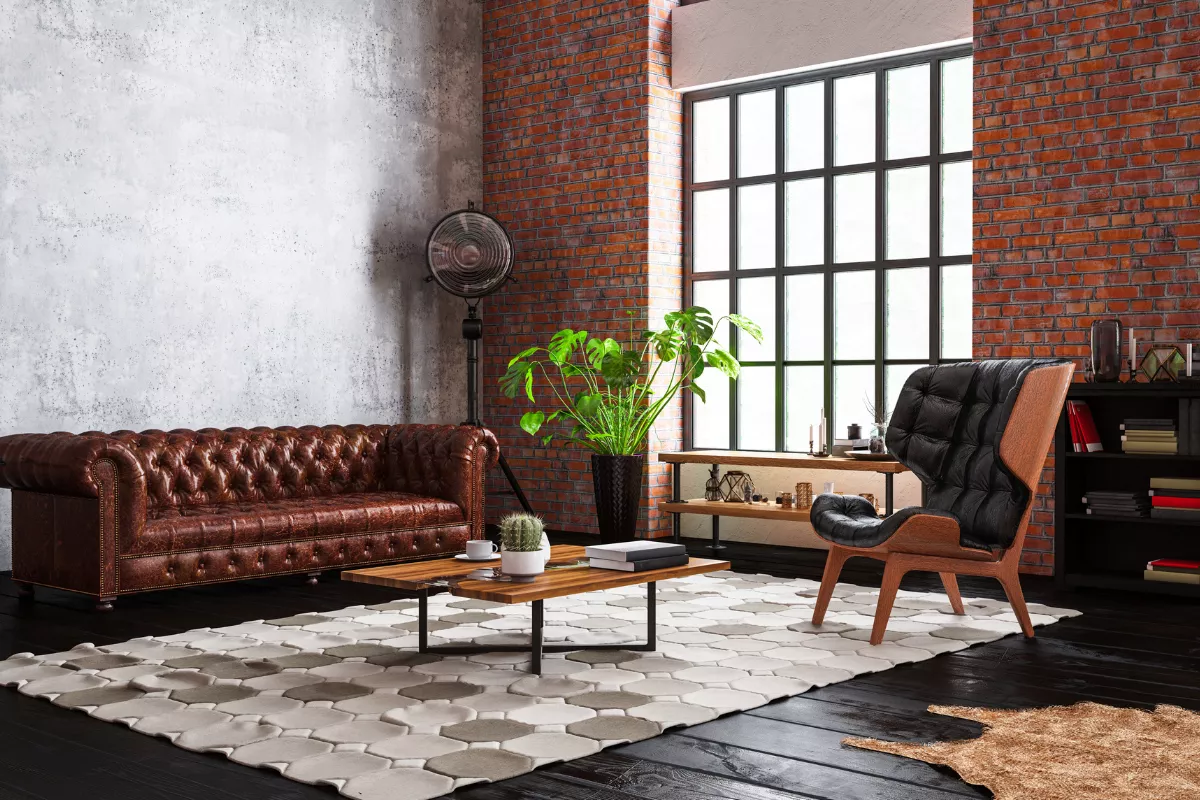
 Marcio Vasconcelos
Marcio Vasconcelos
